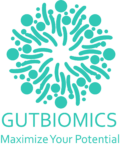Multi-omics 101
To help you get the most out of this report, here's a quick "Multi-omics 101." Once you understand the basics, you're all set to put your results to the best of your ability and apply them.
Definitions
Chromosomes
There are chromosomes in every cell of the body. Chromosomes are a kind of strands. They consist of a substance called DNA. This DNA contains a kind of ‘code’ in which all hereditary characteristics are recorded.
Genes
The genes are on the chromosomes. A gene is a piece of DNA. Each gene describes the code of a characteristic, which (co-)determines what one looks like, how the body works or how you are.
Genome
The genome is the complete genetic makeup of an organism, cell or virus.
Genotype
The sum of all genetic makeup is genotype = what we can be (our potential). Genes have an influence, but they don’t determine everything!
Epigenome
The epigenome is the operating system of DNA and turns genes in cells and tissues on and off. This is the gene regulation and cell specialization. For example, the gene regulation of a muscle cell is different from a hair cell.
Epigenetics
Epigenetics studies how your set of genes is expressed and what influence environmental factors have on it. These environmental factors are determined by lifestyle. These are things like nutrition, stress, sports, day and night rhythm, illness, medication, etc… The environment can activate or disable the functioning of genes.
Phenotype
The phenotype is the sum total of all observable traits (characteristics) of an organism. It is the result of an individual’s genetic predisposition (genotype) and the influence of environmental factors. Phenotype is expressed by the formula: phenotype = genotype + outside influence = what we are (based on our choices).

This network of metabolic pathways can vary from person to person.
Your unique metabolic pathway mapped: multi-omics analysis.
To get a good picture of your network, a multi-omics analysis is performed so that we get a picture of your ‘inner selfie’ of metabolic pathways.
In such a multi-omic analysis, we look at various ‘biosamples’ (saliva, bowel movements, sweat, urine, etc…)
- your genetic makeup -> your potential
- your microbiome (i.e. your characteristic microorganisms on your skin, mouth, gastrointestinal system) -> representation of your environmental factors
- and metabolites (the substances that characterize your unique ‘metro route’) -> your operating system situation sketch
This gives us a good picture of what is going on biochemically in your body.
Why measure nutrients and follow them up further?
Nutrients are essential for good health. They are crucial components of many types of biochemical conversions in the body, such as enzyme reactions. A deficiency or excess of nutrients can lead to a reduced function of multiple (organ) systems and the human body as a whole. Before complaints and diseases manifest themselves, disturbances in the nutrient balance can already be detected. Measuring the nutritional status therefore has a important preventive role. Based on nutritional analyses, a nutritional or nutritional supplementation therapy can be applied, specified for the individual situation.
Nutrient measurements also contribute to the follow-up of a person or athlete and can be used to monitor the effects of a therapy, training or periodization.
Your unique metabolic pathway as a top athlete.
For athletes it is very important that the energy metabolism of the skeletal muscles during exercise is optimal. We mainly look at all aspects of the energy unit of your body. This is called ATP.
ATP can be compared to the Euro. ATP is, as it were, the means of payment for energy.
This process takes place in the mitochondria, the energy factories, of the cell.
In order for you to be able to exercise and perform optimally, it is important that these ‘energy factories’ function efficiently during training, competition and recovery. So the nutrients must be able to be converted into energy quickly. The ADME must be very efficient.
Optimize your unique metabolic pathway.
Good metabolic health contributes to well-being, peak performance, recovery and healthy aging. People who are physiologically in optimal condition can better cope with the daily challenges that the body experiences. We are talking about the optimization of ‘cellular respiration’ or the way in which your cells obtain chemical energy by breaking down food molecules such as carbohydrates, lipids and proteins. In addition, it is also important to have an idea of which factors are crucial at what time to optimally protect the body.
Making health improvement and top performance measurable.
Through bioinformatics, all data from the multi-omics analysis is mapped. For example, we can make a classification of 4 themes in which 3 phenotypes can be distinguished. These phenotypes are linked to biomarkers via measurement methods that make improvements in ADME and health measurable.
This way you can grow old healthy with small adjustments and maximize the resilience of your physiology.
- Food Type (Type 1, 2 or 3).
- Supplementation Type (Type 1, 2 or 3).
- Recovery Type (Type 1, 2 or 3).
- Cognitive Type (Type 1, 2 or 3).
- Wellbeing Type (Type 1,2 or 3).
